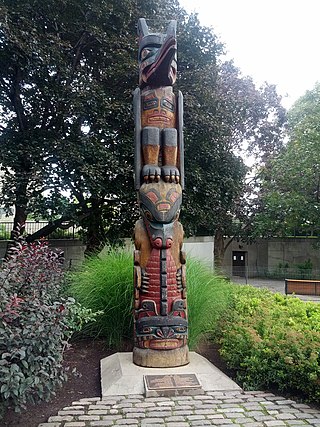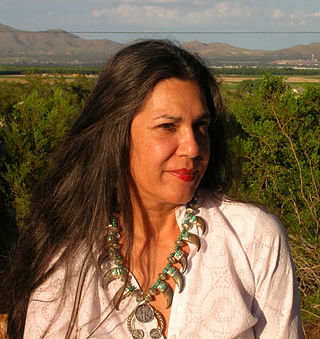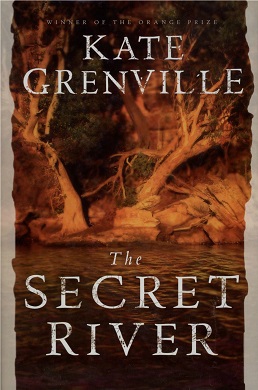
Thomas Michael Keneally, AO is an Australian novelist, playwright, essayist, and actor. He is best known for his non-fiction novel Schindler's Ark, the story of Oskar Schindler's rescue of Jews during the Holocaust, which won the Booker Prize in 1982. The book would later be adapted into Steven Spielberg's 1993 film Schindler's List, which won seven Academy Awards, including Best Picture.

Canadian literature is the literature of a multicultural country, written in languages including Canadian English, Canadian French, and Indigenous languages. Influences on Canadian writers are broad both geographically and historically, representing Canada's diversity in culture and region.

The Dreaming, also referred to as Dreamtime, is a term devised by early anthropologists to refer to a religio-cultural worldview attributed to Australian Aboriginal beliefs. It was originally used by Francis Gillen, quickly adopted by his colleague Baldwin Spencer and thereafter popularised by A. P. Elkin, who, however, later revised his views.

A totem is a spirit being, sacred object, or symbol that serves as an emblem of a group of people, such as a family, clan, lineage, or tribe, such as in the Anishinaabe clan system.
Postcolonial literature is the literature by people from formerly colonized countries, originating from all continents except Antarctica. Postcolonial literature often addresses the problems and consequences of the decolonization of a country, especially questions relating to the political and cultural independence of formerly subjugated people, and themes such as racialism and colonialism. A range of literary theory has evolved around the subject. It addresses the role of literature in perpetuating and challenging what postcolonial critic Edward Said refers to as cultural imperialism.

Australian literature is the written or literary work produced in the area or by the people of the Commonwealth of Australia and its preceding colonies. During its early Western history, Australia was a collection of British colonies; as such, its recognised literary tradition begins with and is linked to the broader tradition of English literature. However, the narrative art of Australian writers has, since 1788, introduced the character of a new continent into literature—exploring such themes as Aboriginality, mateship, egalitarianism, democracy, national identity, migration, Australia's unique location and geography, the complexities of urban living, and "the beauty and the terror" of life in the Australian bush.

Ana Castillo is a Chicana novelist, poet, short story writer, essayist, editor, playwright, translator and independent scholar. Considered one of the leading voices in Chicana experience, Castillo is most known for her experimental style as a Latina novelist and for her intervention in Chicana feminism known as Xicanisma.
Archie Weller is an Australian writer of novels, short stories and screen plays.

Rosie Scott was a novelist, poet, playwright, short-story writer, non-fiction writer, editor and lecturer, with dual Australian and New Zealand citizenship.

The Secret River is a 2005 historical novel by Kate Grenville about an early 19th-century Englishman transported to Australia for theft. The story explores what might have happened when Europeans colonised land already inhabited by Aboriginal people. The book has been compared to Thomas Keneally's The Chant of Jimmie Blacksmith and to Peter Carey's True History of the Kelly Gang for its style and historical theme.

Totem and Ore is a collection of 5 000 photographs taken by B Wongar in the 1960s and early 1970s. The photographs were taken in northern and central Australia. The collection is about tragedy of Australian Aborigines - the people who lived through dual tragedy, the mining of uranium and the subsequent British nuclear testing in that area. To deflect any criticism of the testing Australian government enacted Australian Atomic Energy Act forbidding publishing any kind of information about it. The penalty for violating the Act was imprisonment up to 20 years. The uranium mining and nuclear testing destroyed Australian Aborigines natural habitat and decimated their population in northern and central Australia.
Alan Gould is a contemporary Australian novelist, essayist and poet.

Anita Marianne Heiss is an Aboriginal Australian author, poet, cultural activist and social commentator. She is an advocate for Indigenous Australian literature and literacy, through her writing for adults and children and her membership of boards and committees.

Bring Larks and Heroes is a 1967 novel by Australian author Thomas Keneally which won the Miles Franklin Award in 1967.
Croatian literature refers to literary works attributed to the medieval and modern culture of the Croats, Croatia, and Croatian. Besides the modern language whose shape and orthography was standardized in the late 19th century, it also covers the oldest works produced within the modern borders of Croatia, written in Church Slavonic and Medieval Latin, as well as vernacular works written in Čakavian and Kajkavian dialects.
Eugene B. Redmond is an American poet, and academic. His poetry is closely connected to the Black Arts Movement and the city of East St. Louis, Illinois.
Tony Birch is an Aboriginal Australian author, academic and activist. He regularly appears on ABC local radio and Radio National shows and at writers’ festivals. He was head of the honours programme for creative writing at the University of Melbourne before becoming the first recipient of the Dr Bruce McGuinness Indigenous Research Fellowship at Victoria University in Melbourne in June 2015.
Ato Quayson is a Ghanaian literary critic and Professor of English at Stanford University where he acts as the current chair of the department. He is also the chair of the newly established Department of African and African American Studies. He was formerly a Professor of English at New York University (NYU), and before that was University Professor of English and inaugural Director of the Centre for Diaspora Studies at the University of Toronto. His writings on African literature, postcolonial studies, disability studies, urban studies and in literary theory have been widely published. He is a Fellow of the Ghana Academy of Arts and Sciences (2006) and the Royal Society of Canada (2013), and in 2019 was elected Corresponding Fellow of the British Academy. He was Chief Examiner in English of the International Baccalaureate (2005–07), and has been a member of the Diaspora and Migrations Project Committee of the Arts and Humanities Research Council (AHRC) of the UK, and the European Research Council award grants panel on culture and cultural production (2011–2017). He is a former President of the African Studies Association.
Ali Cobby Eckermann is an Australian poet of Aboriginal Australian ancestry. She is a Yankunytjatjara woman born on Kaurna land in South Australia.
Kerry Reed-Gilbert was an Australian poet, author, collector, editor, educator, a champion of Indigenous writers and an Aboriginal rights activist. She was a Wiradjuri woman.









